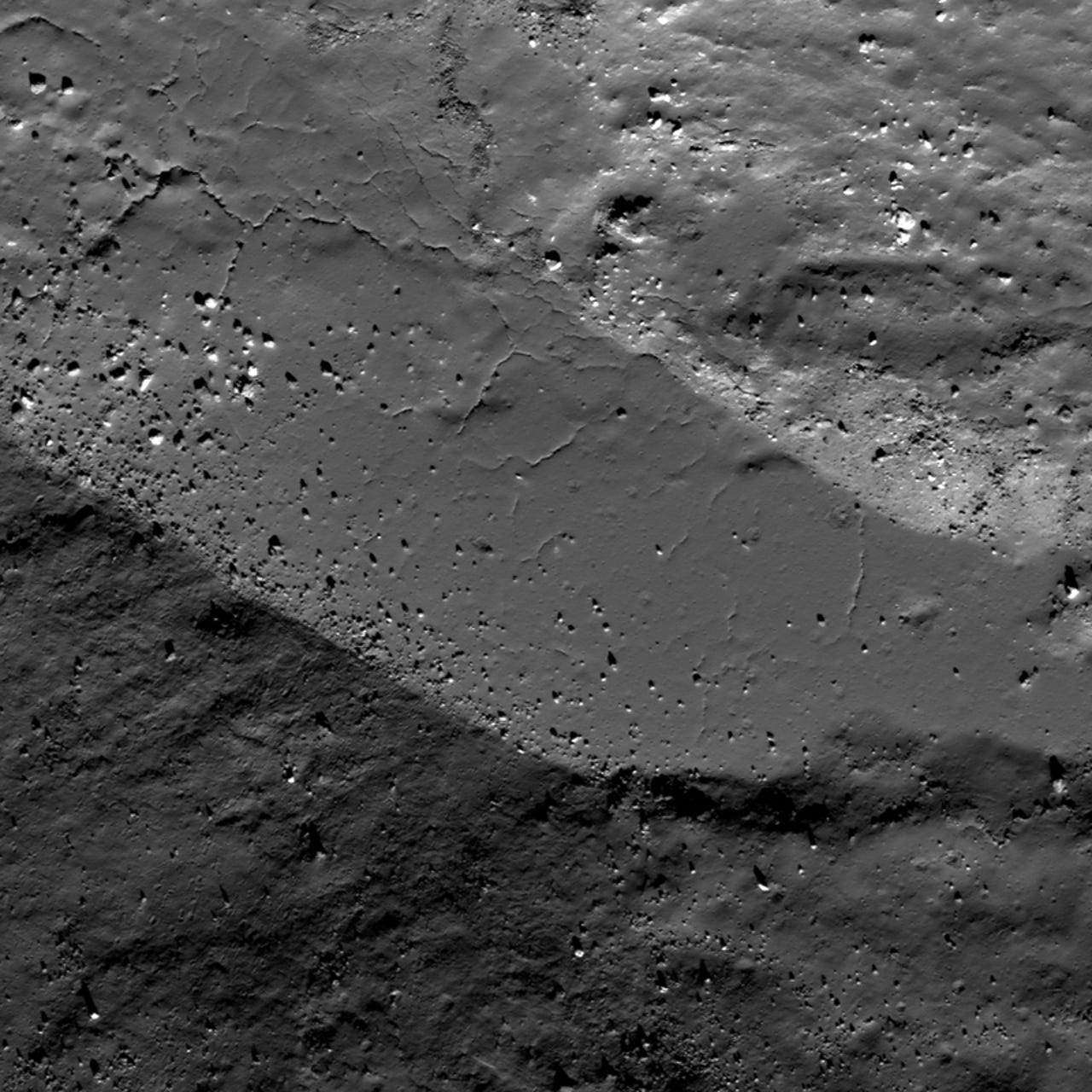Gallery: NASA takes a new, closer look at the moon


NASA declares the mission of the Lunar Reconnaissance Orbiter (LRO) a success after beaming back images and measurements in sharper detail than ever before. The LRO was launched on June 18, 2009 and its seven instruments have sent back more than 192 terabytes of data - the equivalent of 41,000 DVDs. Images recorded up to 1.5 feet per pixel - showing new details of the lunar surface.
The smooth impact melt inside Thales crater is cracked and then sprinkled with boulders from the neighboring slope. Here's a look at some of the images and measurements returned by the LRO.
Credit: NASA/GSFC/Arizona State University
"We needed to leverage the very best the
science community had to offer," said Michael Wargo, chief lunar
scientist of ESMD. "And by doing that, we've fundamentally changed
our scientific understanding of the moon."
This image shows a flow of impact melt moving away from its crater.
Credit: NASA/GSFC/Arizona State University
The Lunar Reconnaissance Orbiter Camera revealed nearly 5.7 million square kilometers of the moon's surface.
In the photo above, this crater which is located in Mare Humorum contains relatively few boulders. This means that the impact area is probably made of regolith and fragmented the underlying mare basalt into large boulders.
Credit: NASA/GSFC/Arizona State University
For a six month period (or six lunar days) the LRO collected 1,700 images of the same area at the south pole. The binary images were then stacked to form the map above which shows the areas that never see sunlight.
The LRO found the coldest spot in the
solar system, with a temperature of minus 415 degrees Fahrenheit.
Credit: NASA/GSFC/Arizona State University
Is this a volcano?
Credit: NASA/GSFC/Arizona State University
Boulders clustered on a positive relief bulge in an impact melt deposit on the floor of Anaxagoras crater.
Credit: NASA/GSFC/Arizona State University
A dry flow of boulders down the slope of Riccioli crater's inner wall. The area slopes from the bottom right hand corner to the upper left hand corner.
Credit: NASA/GSFC/Arizona State University
This shows where the previous image was taken.
Credit: NASA/GSFC/Arizona State University
Is it dry debris or liquid flow? Granular debris on the wall of Stevinus A flows downhill to the right. A 7 meter boulder impedes the progress of the flow, which bifurcates and reconnects about 10 m downhill.
Credit: NASA/GSFC/Arizona State University
The far side of the moon. Astronauts are the only humans to ever see it in person.
The LRO detailed new maps of lunar surface characteristics.
This is a south polar map of enhanced hydrogen which could potentially be used as fuel.
LRO also created a radar map of the north polar region.
The lunar poles are shown in ultraviolet light.
The LRO captured this landslide on the wall of a small crater which slopes from the top right to the bottom left. The landslide has exposed many boulder within the crater wall.
Credit: NASA/GSFC/Arizona State University
NASA doesn't know how pancake-like mounds like this one in thte Stevinus crater formed on a relatively flat surface. Perhaps they were formed by magma under the crust or maybe they were formed by slumping caused by small impacts over time.
Credit: NASA/GSFC/Arizona State University
Here's a farther view around the Stevinus crater.
Credit: NASA/GSFC/Arizona State University
This large hole is thought to be created by a collapsed lava tube.
The upper slopes of Diophantus crater, located on the western edge of Mare Imbrium, shows dark materials that flowed downward from the crater walls. These dark features originate from several layers exposed in the crater walls. But what are they made of and how did they get there? Volcanos?
More mounds on the floor of the King crater.
Credit: NASA/GSFC/Arizona State University
Here's an example of layering exposed in the wall of the Bessel crater.
Credit: NASA/GSFC/Arizona State University
LRO finds evidence of humans on the moon. Here's the landing site of Apollo 14.
Here's what the surface of the moon looked like from Apollo 14.
NASA has many, many more images and videos received from the LRO.